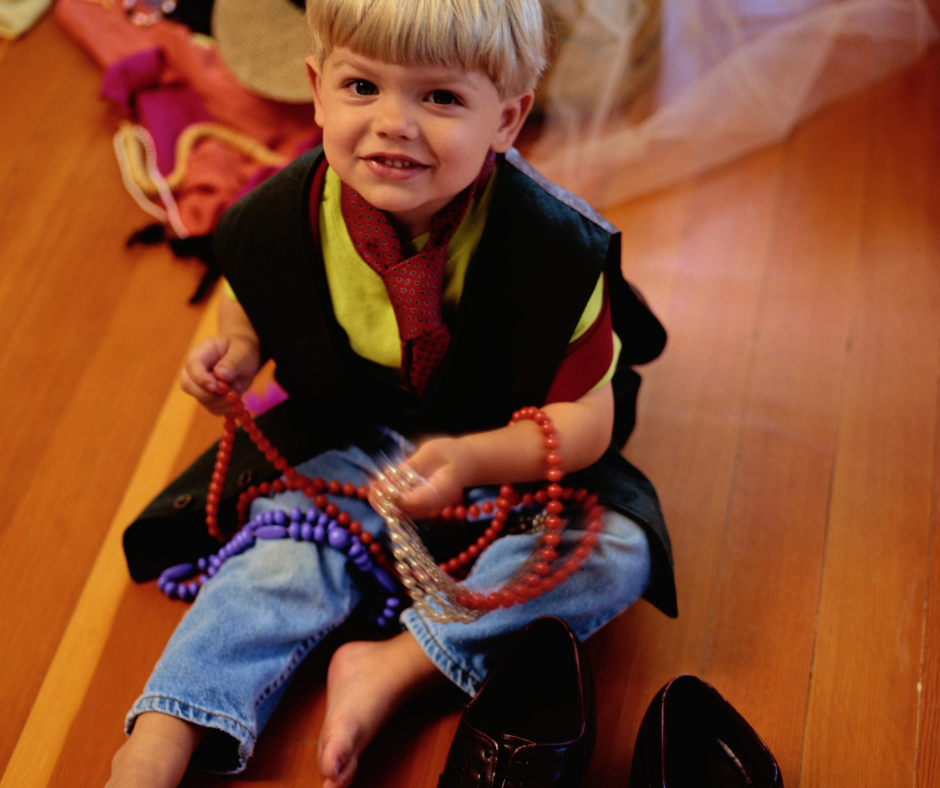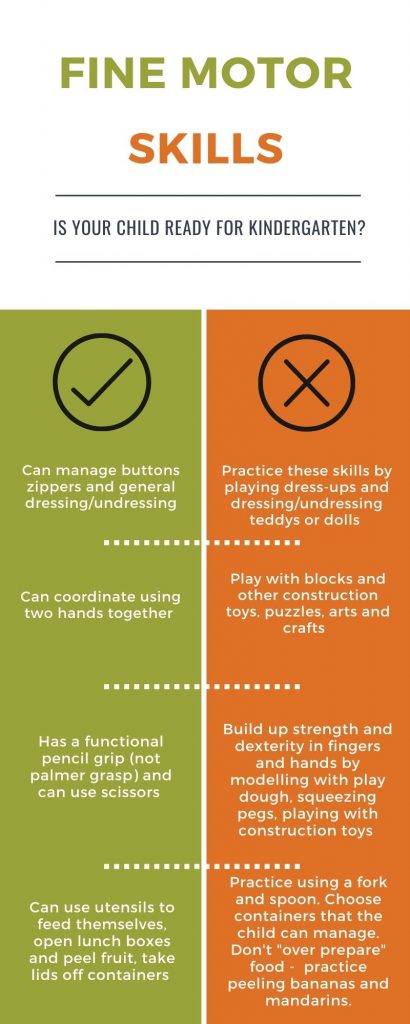What are Fine Motor Skills?
Fine Motor Skills involve the use and coordination of the smaller muscles in the hands, fingers and thumbs. Fine motor skills begin to develop very early in life. You may notice how a baby concentrates to coordinate their forefinger and thumb to pick up a small object – which then usually goes straight into their mouths for further exploration as these infants are still in a sensorimotor stage of development. The coordination and motor control for picking up and using objects matures with time as children improve their manual dexterity.
Fine motor skills can be well developed and efficient or poorly developed. In order to feel confident and ready for kindy, preschool or school, children need to be exposed to activities that will help them to practise their gross and fine motor skills. The quality and speed of task outcomes is greatly influenced by fine motor ability.
Why are fine motor skills important?
Children will need to use their fine motor skills in order to participate fully in the classroom as these skills play a major role in both the academic and social environments. If children’s motor skills are poorly developed they will quickly fall behind their peers and will struggle with the demands of more formal education.
Fine Motor Ideas for Preschoolers
Using pencils, crayons, markers and scissors.
Learning to use pencils, crayons, markers and to cut with scissors forms a big part of every pre-school curriculum. The skills used for cutting also help children with handwriting as they practise motor control, planning and sequencing.
Very young children tend to hold their pencil in their palm because they have not yet developed sufficient strength or dexterity in the fingers and hands for a more mature grip.

However, once a child’s fine motor skill improves they can graduate to a modified tripod grip by using their thumbs and first two fingers for precision and tucking their pinky and ring fingers into the palm to use as a support base. This type of grip allows for increased motor control and will assist with maintaining letter size and shape.

Removing and replacing the lids on texta colours and markers requires strength in the fingers and hands (as well as preserving the markers!). This is also an example of a simple motor sequencing task which improves with practice and repetition.
Exploring through play.
Construction play involves two handed coordination, motor control for the precise placement of blocks, pre-science skills (trial and error), planning and sequencing skills.

Imaginary play and dress-ups gives children the opportunity to practise every day self-care skills such as doing zippers and buttons, brushing hair, coordinating the sequence of dressing such as socks go on before shoes.

Becoming independent
To feel competent, children need to be able to have a degree of independence with self care. To be able to manage dressing and undressing for toileting, opening lunch boxes and drink bottles, packing and unpacking backpacks, putting on their own hats and shoes and feeding themselves appropriately by peeling fruit or opening food packaging without the need for additional adult support are all important skills.
How to help a child develop these fine motor skills.
Exposure.
The most important thing you can do to help children develop their fine motor skills is to expose them to fun, playful activities that involve these skills. If a child is really interested in the play, they will naturally become more focused on success but it is important to pitch the activity to the right level. Don’t make it too difficult or too easy – Vygotsky (1978) Zone of Proximal Development provides an understanding of this theory. By careful observation of which stage a child is currently in, you can scaffold them to achieve the next level by providing just enough support and encouragement to develop a growth mindset – of “I can do it” versus “I can’t…”
Time to practice.
After giving young children exposure to a whole range of different activities, you also need to give them the time to practice the skills. Parents can think about the busiest time of the day and put strategies in place to make executing tasks during that time as simple as possible. For example, at home, mornings can be hectic so to help children become more independent with dressing you might like to lay out the clothes the night before in the order they need to be put on either in a line or in a pile. If it is a uniform, decisions are easy, but if not, decide together before bed what to wear the next day. Perhaps consult weather forecasts, talk about school timetables…is it sport day tomorrow, or library day? What do I need to pack?
Teachers can also help children by allowing sufficient time for them to act independently. At the end of the day everyone is tired but you can encourage independence in the children by asking them to collect their drink bottles and hats and put them in their backpacks by themselves rather than waiting for parents to do this after pick up., You might have a check list chart that children can follow to make sure that they have all of their belongings. Encourage parents to allow their children to carry their own backpacks and to unpack it at the start of the day and re-pack it at the end of the day.
How Can Parents Help?
Rather than focusing on teaching your child how to write their name, count, say the alphabet or read you can help to give them the very best foundations for learning by giving them lots of opportunities to develop their gross and fine motor skills through a range of play based activities and games which will be fun and engaging for both you and your child.
If your child has great foundation skills, they will be primed for learning, and your child’s teacher has the specialist training and knowledge of how to teach children most effectively.
What are foundation skills?
Having a strong, healthy body – supported by good nutrition and heaps of outdoor play, including climbing, jumping and hopping to build strong bones and muscles.
Being able to use a pincer grip (thumb and forefinger) to pick up small items and move them across the midline is an important pre-cursor skill to learning to read and write as we need to smoothly coordinate our eyes and hands. Practice choosing and sorting items such as buttons from one container to another.
Playing well with others – able to share, join in games, accept losing, be a gracious winner, be kind, be thoughtful, use good manners.
Have some independence – be toilet trained, able to dress and undress with minimal assistance, be responsible for own belongings such as water bottles, hats and jumpers, ask an adult for help when needed, express emotions appropriately for their age.
This infographic may be useful as a reminder of some important fine motor skills needed to ensure readiness for the transition to kindergarten or preschool.
References:






Thanks for this clear concise list – I hope I am not too late to request a copy?
thanks
Louise
Hi Louise, I hope it is helpful. I will email you a PDF copy so that you can pass it on.
Hi Sue
I have only just come across this excellent article and would love to share with my families next year.
Would love the PDF copy if not too much trouble.
Thanks in advance
Charlotte
Thanks Charlotte for those kind words. I will email you a PDF copy of the Infographic.
What a wonderful resource for parents. Could I also have a copy please?
Thank you very much!
Glad you found it useful Anita. Emailing you a copy of the Infographic today.
I am late to this north but impressed with what I have just read. Will be looking much closer to your site and resources. Any chance you are still sharing your article? Many thanks
Hi Theodora, Was it the infographic you are after? I would be happy to email it to you. So happy you found the website!